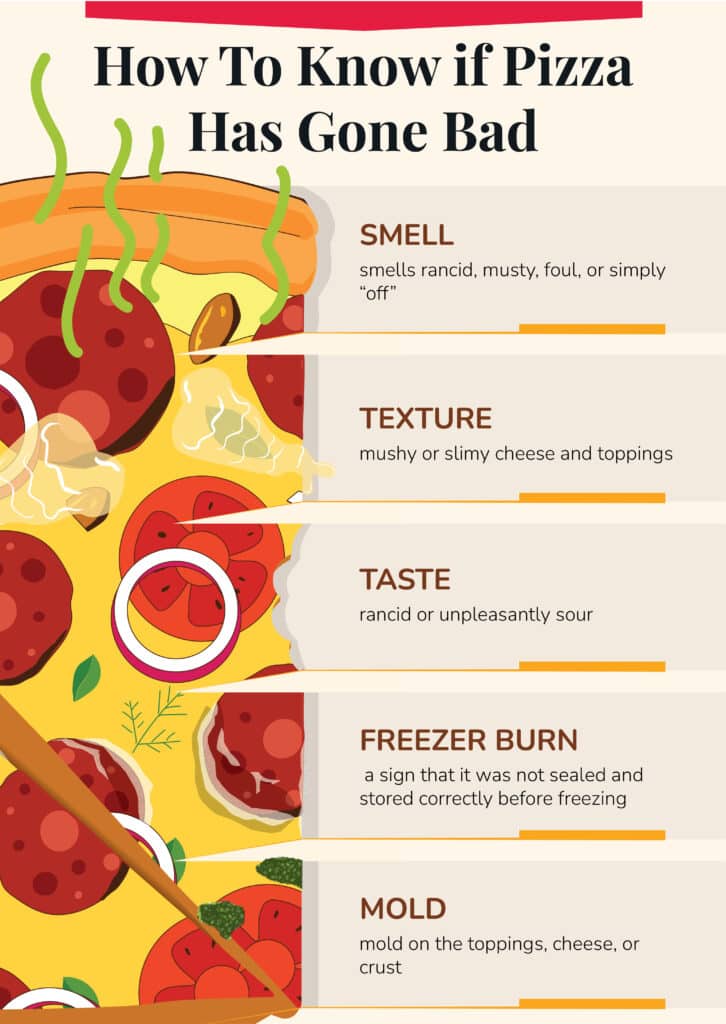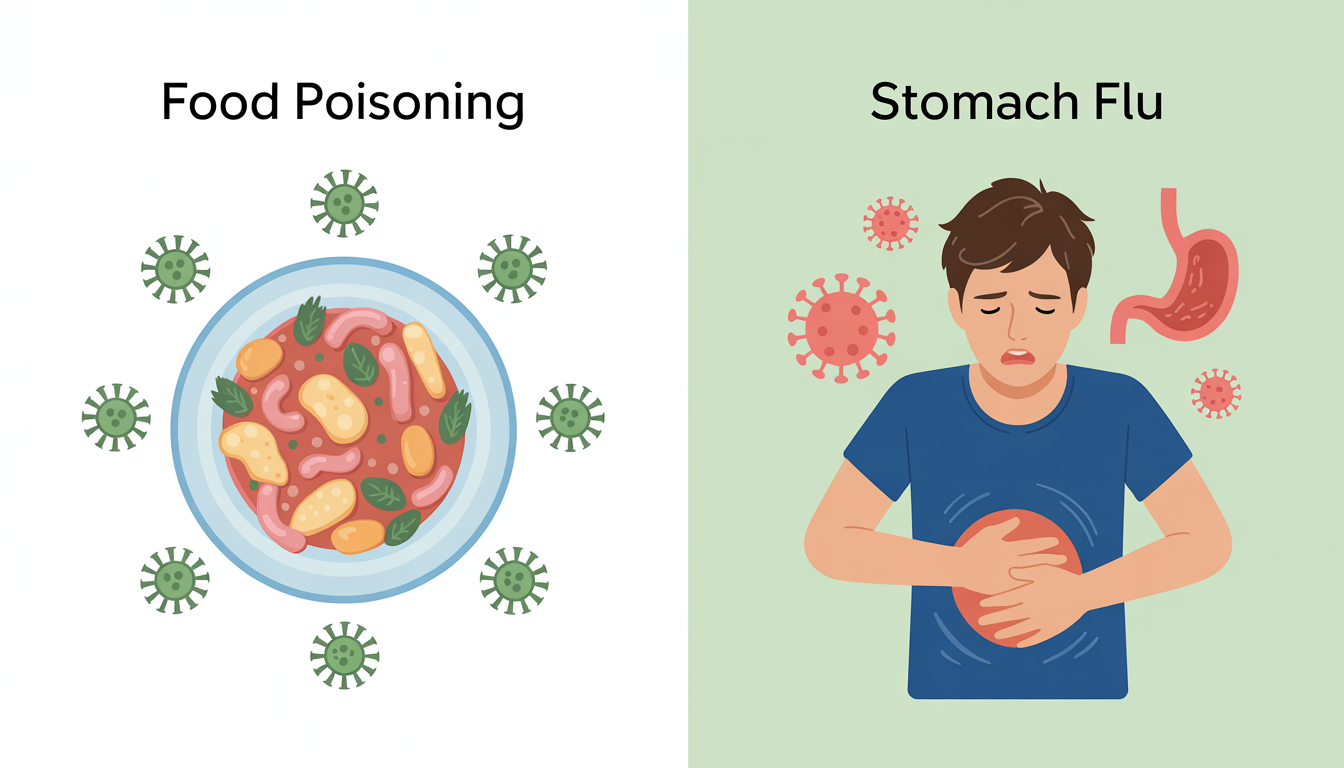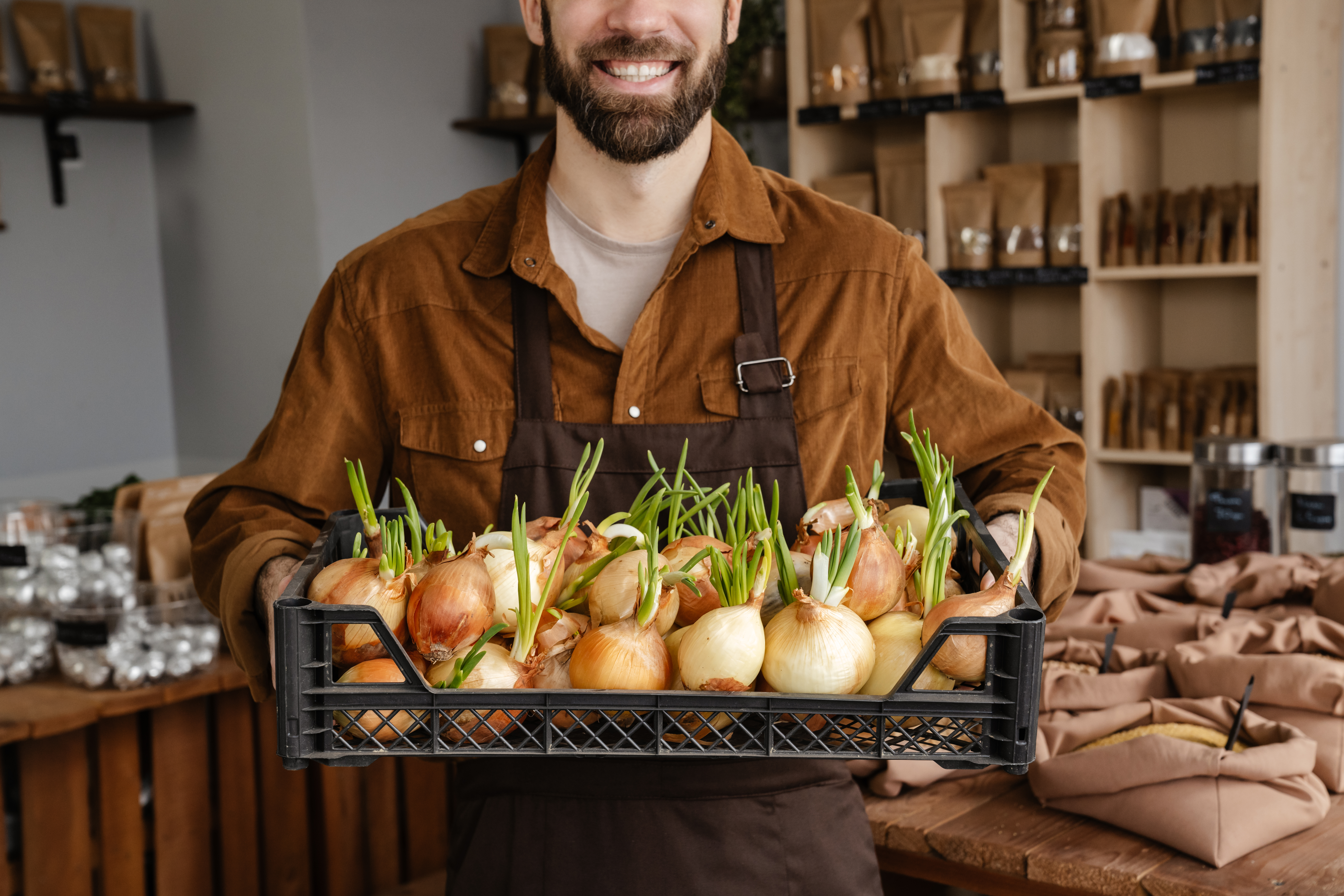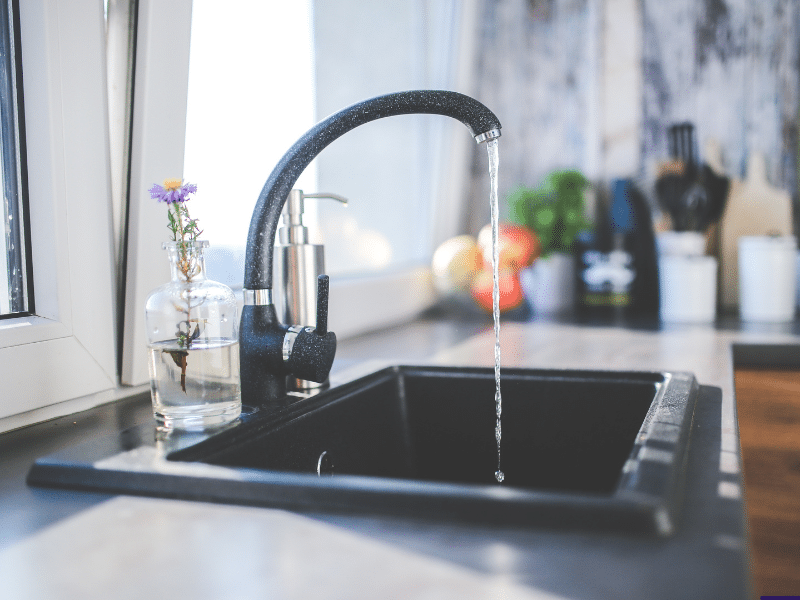Can You Get Food Poisoning From Pizza?
Yes, eating pizza that’s been left out at room temperature for too long can increase your risk of food poisoning. Harmful bacteria like:
- Staphylococcus aureus
- Salmonella
- Campylobacter infection
- E. coli. can grow on pizza left out overnight, potentially leading to serious foodborne illnesses.
If pizza manufacturers, restaurant staff, or other trained food professionals fail to prevent food poisoning, you risk developing serious digestive symptoms and bacterial infections.
What Causes Food Poisoning From Pizza?
There are different ingredients that make up a pizza, and therefore, various ways for dangerous pathogens to develop. In general, pizza consists of dough, sauce, and toppings.
Pizza Dough
Pizza dough is typically made from flour, yeast, water, salt, and sometimes olive oil. While flour may look harmless, the Centers for Disease Control and Prevention refers to flour as a raw food that must be treated to prevent food poisoning. The flour in raw dough or undercooked dough may carry germs that can make you sick.
Pizza Sauce
Even when you purchase jarred pizza sauce, it can still have mold or bacterial growth if the sauce is not bottled correctly. Also, the ingredients that make up the sauce may have been mishandled or not cooked enough to kill harmful germs.
Pizza Toppings
Everybody has pizza topping preferences. However, some toppings carry a higher risk of food poisoning than others. For example, sausage, pepperoni, and other meats can contain Listeria or other bacteria. If mishandled, other high-risk ingredients that may cause food poisoning include cheese, seafood, and vegetables.
Improper Handling
Poor handling of the dough, sauce, or toppings and bad cooking practices can lead to food poisoning from pizza. Some examples include:
- Failure to notice the pizza dough is still raw
- Allowing raw ingredients to touch and contaminate the pizza
- Ingredients not refrigerated as required
- Pizza left at room temperature for extended periods
- Pizza ingredients not cooked to the proper temperature
- Preparing pizza in an unsanitary environment
- An infected person handling the pizza
When pizza is left out or not prepared correctly, bacteria will quickly multiply. Common types of bacteria and parasites you might find on contaminated pizza are:
How Do You Know if Pizza Has Gone Bad?
In some cases, it will be obvious that pizza has spoiled. However, bacteria growth is not always apparent right away. Here are ways to check if you should ditch the leftovers to avoid food poisoning:

- Smell – First, smell the pizza. If anything smells rancid, musty, foul, or simply “off,” it’s better not to take a chance.
- Texture – The texture of the pizza can change as germs multiply. Mushy or slimy cheese and toppings are a sign that the pizza has gone bad.
- Taste – The way your pizza tastes will also tell you a lot. Dispose of rancid or unpleasantly sour pizza immediately.
- Freezer burn – If you open a frozen pizza and notice freezer burn, it may be a sign that it was not sealed and stored correctly before freezing. To avoid the possibility of contracting a foodborne illness, do not consume it.
- Mold – Mold on the toppings, cheese, or crust means the pizza has spoiled. Even if you try to remove the moldy parts, there could also be bacteria growth on other parts of the pizza.
Is It Safe to Eat Pizza Left Out Overnight?
According to the Department of Agriculture, always refrigerate any leftovers as soon as possible to reduce the risk of foodborne illnesses. When pizza is left out at room temperature overnight, it is a breeding ground for harmful bacteria. Referred to as the “danger zone,” temperatures between 40–140°F are where bacteria and other pathogens thrive.
Leftovers, including pizza, can safely sit out for two hours in most indoor settings but should not be left out for more than one hour in temperatures over 90° F. If food is left out for longer than the recommended time, discard the leftovers to prevent food poisoning.
Food Poisoning From Frozen Pizza
Frozen pizzas also pose a potential risk of food poisoning. Sometimes, the ingredients are contaminated during the manufacturing or packaging process. You can develop a serious foodborne illness if you don’t cook the pizza to the necessary temperature to kill the germs.
Following the cooking directions for frozen pizza is crucial to reduce the risk of food poisoning. While most bacteria, such as E. coli, cannot survive high temperatures, some strains are becoming more heat-resistant. Also, oven temperatures and cooking times may vary. Consider using a food thermometer to ensure the frozen pizza reaches the advised temperature before consuming it.
In addition, pay close attention to expiration dates for frozen pizzas. It is unsafe to keep food longer than intended, even when frozen. If the frozen pizza has expired, dispose of it.
Real Cases of Food Poisoning Outbreaks From Pizza
Requirements for safe food handling are the result of research and learning from real-life foodborne illness outbreaks that seriously impacted consumers. Some examples of pizza food poisoning include:
Norovirus Outbreak in Washington
Public Health Seattle County investigated a norovirus outbreak traced back to The Rock Wood Fired Pizza in October 2021. Fourteen people became ill with norovirus after eating at the restaurant.
Norovirus Outbreak in Minnesota
A norovirus outbreak in 2020 stemmed from a restaurant in Bloomington, Minnesota. Officials connected the build-your-own pizza establishment to eleven infected people.
Ezzo Sausage Company Recall for Listeria Contamination
In 2019, several samples of pizza toppings from Ezzo Sausage Company tested positive for Listeria, a bacteria that infects the gastrointestinal tract. As a precaution, the company recalled 25,000 pounds of sausage and pepperoni products. Although it wasn’t an outbreak, this situation shows there are contaminated pizza toppings that can potentially make you sick.
Tips for Storing and Preparing Pizza
When storing leftover pizza or ingredients, always follow the directions included in the packaging. If there are no specific instructions, the Department of Agriculture recommends the following:
- Do not leave food at room temperature for longer than two hours.
- Wrap leftovers in airtight packaging or food storage containers.
- Keep wrapped food in the refrigerator for three or four days or in the freezer for three to four months.
When preparing pizza, cook it to the recommended temperature. Here are the minimum cooking temperatures for ingredients you may find on a pizza:
- 145° Fahrenheit – Red meats, including beef and pork
- 160° Fahrenheit – Ground meats, such as beef and pork
- 165° Fahrenheit – Poultry, including chicken and turkey
Always check that the pizza crust cooks through and the cheese melts evenly. If you notice any element of the pizza is not thoroughly cooked, continue cooking until all ingredients reach the necessary temperature.
Contact Keep Food Safe to Speak With a Food Safety Lawyer
If you experience food poisoning from pizza and suspect a restaurant or food handler is responsible, contact us today. The team at Keep Food Safe can connect you with a dedicated food safety attorney who will determine if you qualify to take legal action.




